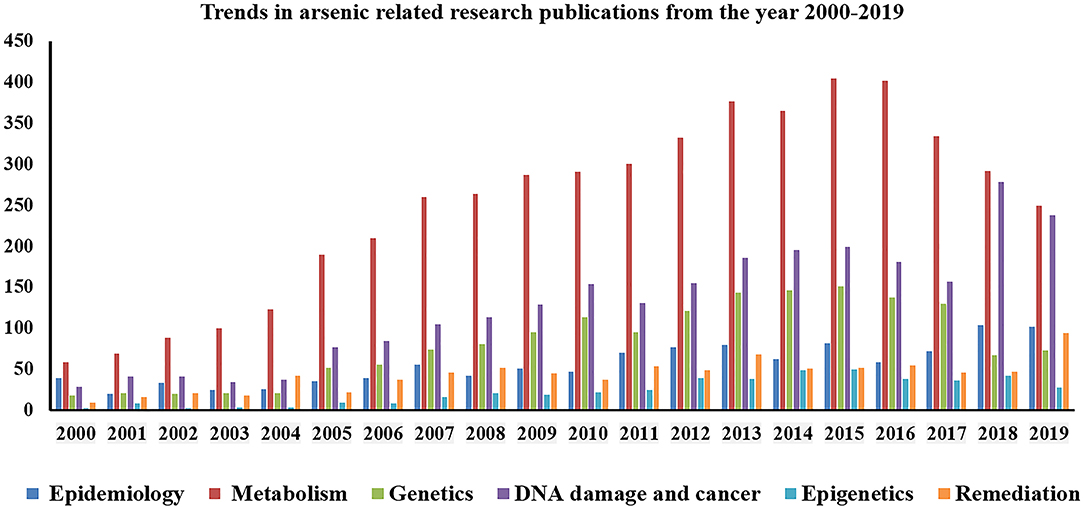

People involved in the mining, processing or smelting of arsenic ores and people involved in the manufacture or use of arsenic-containing pesticides often inhaled arsenic on the job. In the past, people exposed to arsenic in the workplace were at greatest risk of arsenic poisoning. Tobacco itself contained high levels of arsenic until recently, due to the extensive use of arsenic-based pesticides in tobacco farming. The World Bank and UNICEF are now providing Bangladesh financial support to develop alternative drinking water supplies from sources such as stored rainwater or treated pond water. Eventually, these illnesses were traced to the drilled wells, which were tapping water contaminated by arsenic from underground rock.

This reduced epidemics of cholera and other water-borne diseases in Bangladesh, but years later a new pattern of illness emerged in the population.

In an effort to solve the problem of unreliable and unsafe drinking water in Bangladesh, several international agencies had supported a program that replaced shallow surface-water wells with deeper, drilled wells. In the early 1990s, an unprecedented arsenic poisoning in Bangladesh brought international attention to the toxic effects of naturally occurring arsenic in drinking water. More recently, exposure to arsenic from natural sources in the environment has become a concern. People who came into contact with concentrated sources of arsenic such as industrial or agricultural wastes or arsenic-based pesticides or medicines were also thought to be at risk. Until recently, arsenic was believed to be a concern primarily for workers who produced or used arsenic-containing products. Though arsenic is often grouped among the toxic metals, it belongs to a class of elements known as metalloids, which share properties of both metals and nonmetals. Miners once recognized arsenic in rock by the pungent aroma released by blows of a hammer or pick. But when arsenic is heated – by bright sunlight or in a laboratory experiment – it passes directly from its solid state to a gas and gives off a distinctive garlic odor. Most arsenic compounds are undetectable to the senses, since they have no smell or taste. Some forms of arsenic are quite toxic others are less so. Arsenic trioxide is also important as a raw material for products containing arsenic.īecause arsenic is an element like carbon and oxygen it does not break down in the environment into simpler substances -though it can change form and combine with other elements into molecules that have different chemical properties. This ore, known since the Greeks of Aristotle’s time, is an important commercial source of arsenic.Ī less common form of arsenic found in nature is the silver-gray rock called arsenic trioxide, which also goes by several common names including elemental, native, pure and white arsenic. The common ore arsenopyrite, a rusty red rock, is a combination of arsenic with sulfur and iron. Arsenic has a particular affinity for sulfur and is often found joined to sulfur in ores – mixtures of minerals that are mined for profitable materials such as silver or copper.

In nature arsenic is usually found in sedimentary or igneous rock joined to or mixed with other elements, such as oxygen. Naturally occurring in the Earth’s crust and widely dispersed in the environment, arsenic is the 20th most abundant element.


 0 kommentar(er)
0 kommentar(er)
